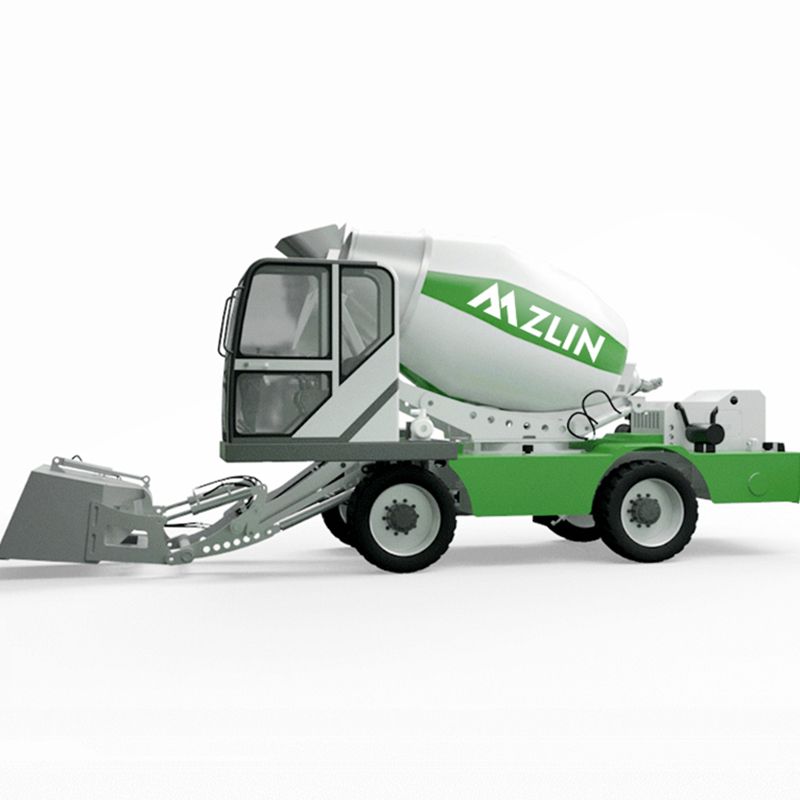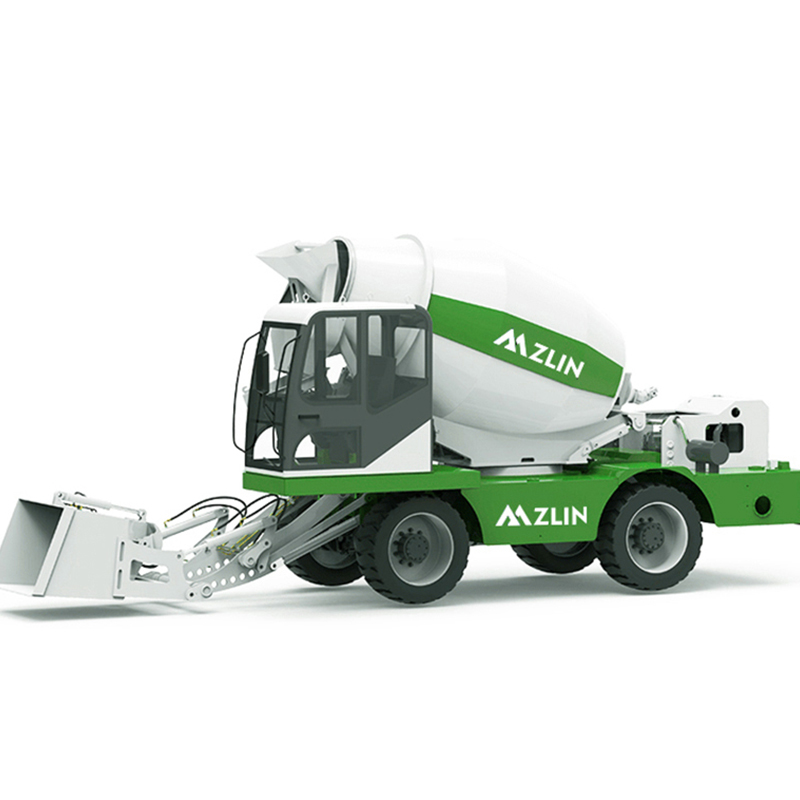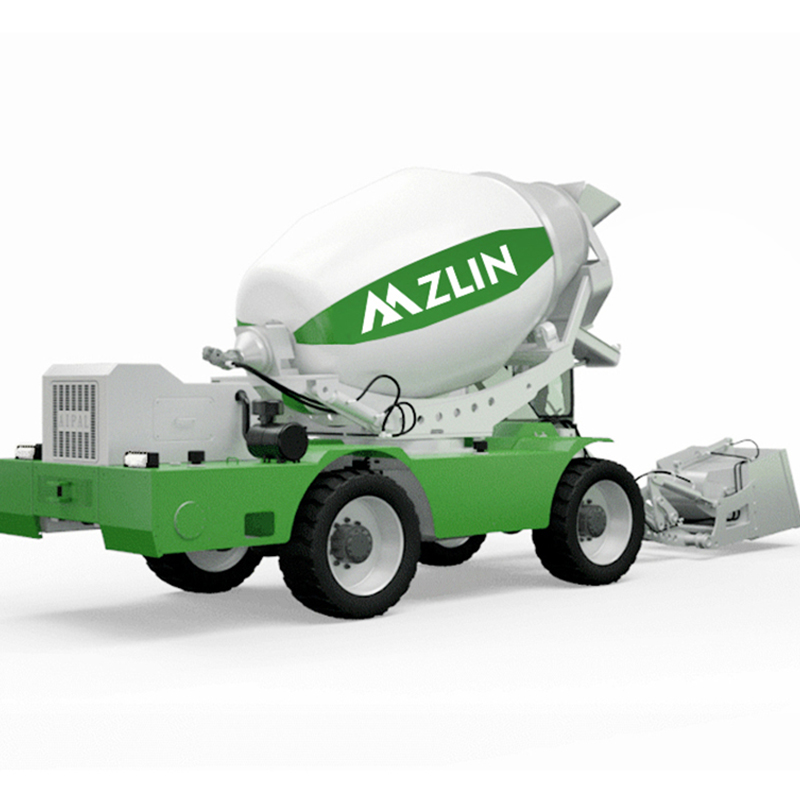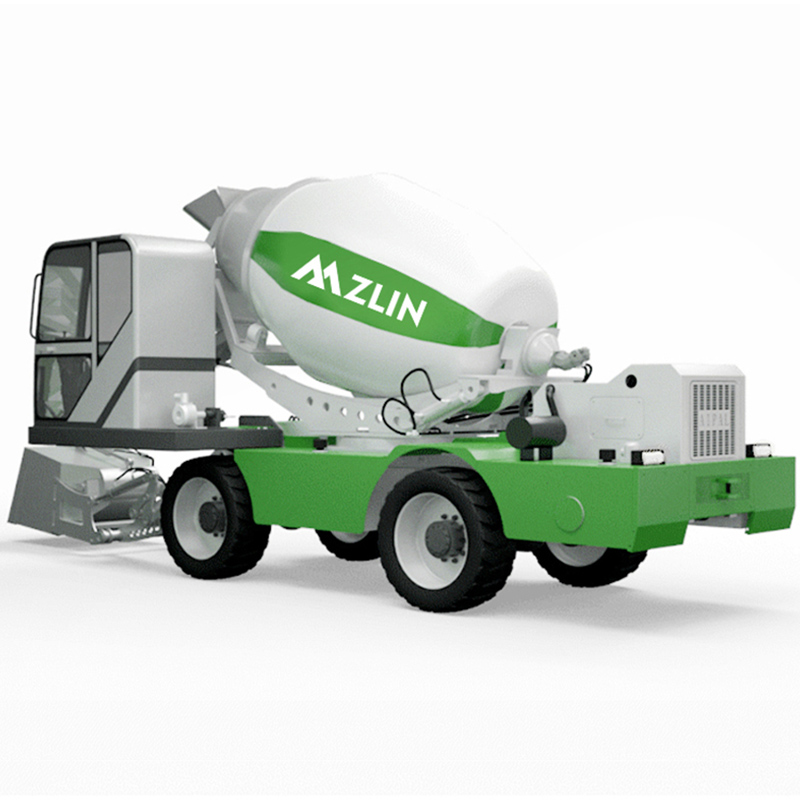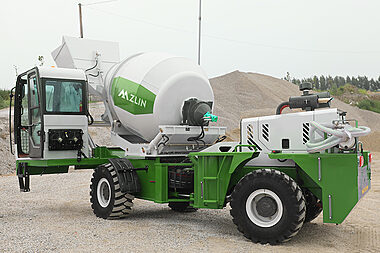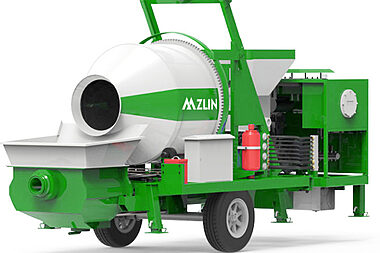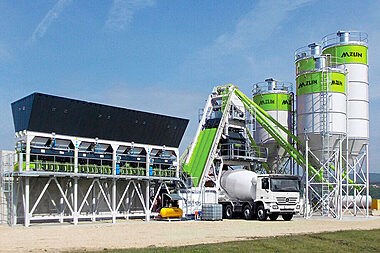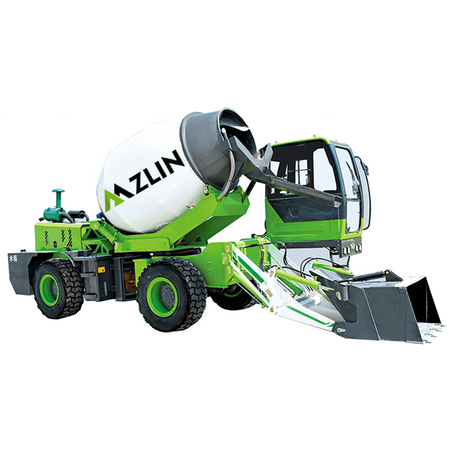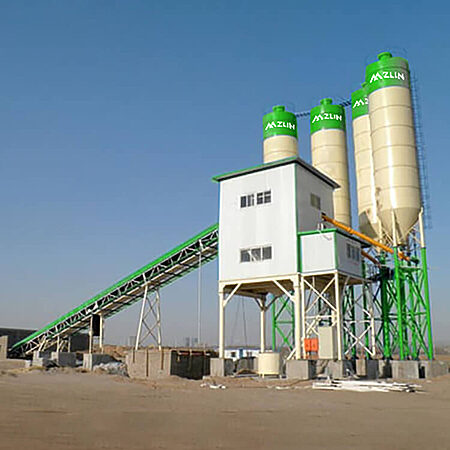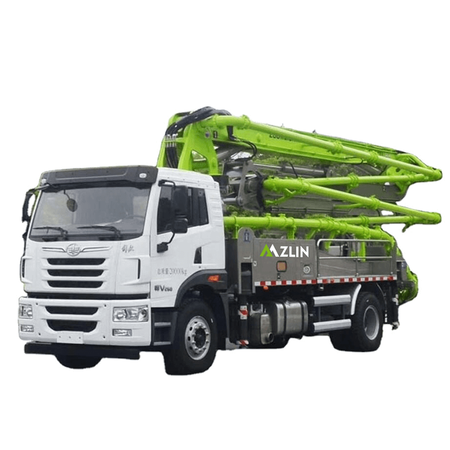The main body of the self loading concrete mixer is fixed on the rail by four wheel frame; when transporting, it moves quickly with the rail car; when working on site, it stops automatically according to the control signal from the rail car control cabinet or the signal lights on both sides of the rail or the optical sensors installed at each point to ensure the safe operation during the transportation.
The main feature of the self-loading concrete mixer is its ability to load and unload itself. The loading and unloading system includes a bottom hopper, designed for easy access to the 2.4m³ top drum of the self-loading concrete mixer. This ensures that any type of construction material can be easily loaded into the concrete mixer without the use of special equipment.
The engine, the pump and the hydraulic mechanism of the self-loading concrete mixer are mounted on a sturdy frame. The engine of the self-loading concrete mixer is connected to the pump and the hydraulic mechanism via a torque converter and gearbox. This means that when starting or stopping the machine, the motor can supply power to all mechanical parts of the concrete mixer at the same time.
The capacity of a self-loading concrete mixer depends on the size of the drum and the type of self-loading concrete mixer. As with most things, there is no one size fits all as far as mixing capacity is concerned. Generally speaking, the maximum capacity of self-loading concrete mixers is lower than that of stationary concrete mixers. While this may seem to make them less popular than their stationary counterparts, it’s important to remember that they’re also not as easy to move as stationary models – if you’re working in a limited space or transporting materials over long distances, having higher load limits may not be worth all that extra hassle.
One thing to keep in mind when buying a self-loading concrete mixer is their weight rating: since they have to carry their own (as well as up to 2 tons of material), they should have at least a 5-mountain per-shaft tonnage rating or higher; this will ensure safe operation even in harsh conditions!
A self-loading concrete mixer is a concrete mixer that can load concrete on its own. The mixer is equipped with a conveyor belt that lifts the concrete to the machine’s drum, which can be driven by an electric motor.
The principle of operation of a self loading concrete mixer is described below.
The self-loading concrete mixer is mounted on a truck and is used to transport the machine from one place to another as required.
A conveyor belt in the self-loading cement mixer lifts the concrete upwards and into the drum of the machine.
An electric motor powers this conveyor belt and loads it with concrete.
The mixing drum is mounted on a chassis, which can be rotated by an electric motor or a hydraulic drive. The mixing drum contains the concrete mixture, which is mixed by rotating the drum, and then the concrete is mixed from all angles.
The self-loading concrete mixer is loaded with more concrete as needed by rotating in the opposite direction, and the drum rotates again to mix the new concrete load. This process continues until all the required amount of concrete has been mixed. Inside the drum is a paddle that rotates with it, and this paddle helps to mix the concrete thoroughly.

